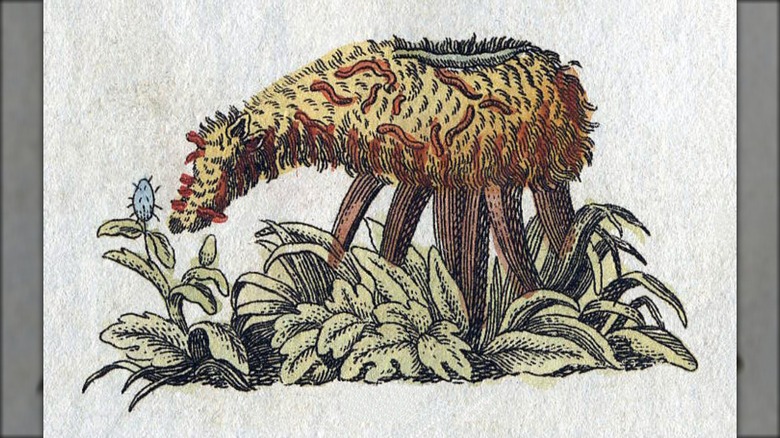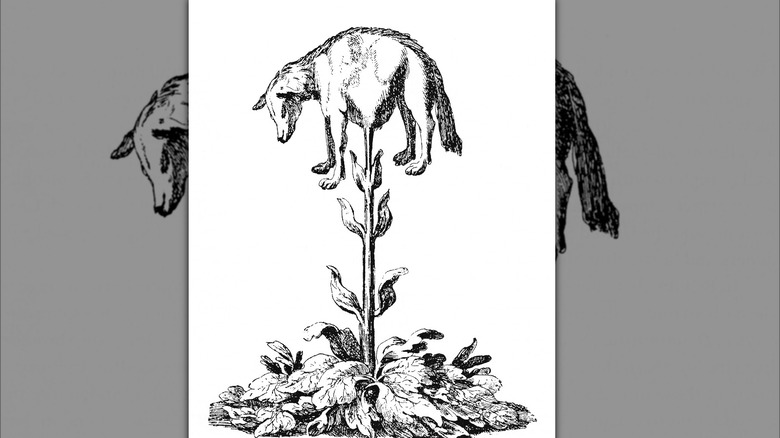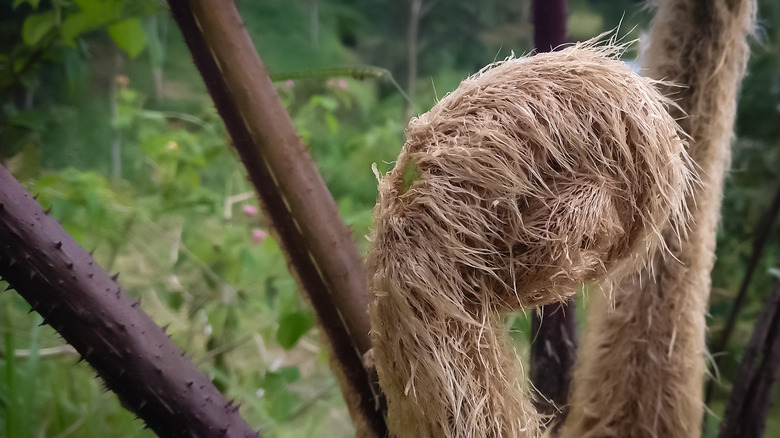The Theories On Why People In The Middle Ages Thought That Lambs Grew On Trees
Dating from around 500 A.D. to 1400 A.D., the Middle Ages or the medieval period in Western Europe was a much simpler (and in many ways far more brutal) time than the world that we live in today, as Britannica notes. Our understanding of science and nature has only deepened since then, especially when one considers the strange and unusual beliefs many people in this time period had about how the world works, as Live Science explains. Anyone up to put a pig on trial in a court of law? Medieval folks thought that made perfect sense. So, too, did some from this era think it was reasonable that a certain species of lamb could grow on a tree.
Of course, we now know no animal grows from a plant rooted to the ground. Some in the Middle Ages from Western Europe, though, who only just were exploring the world on a grand scale, thought that's just what they found as they traveled east. With that in mind, there are a few theories about what they might have seen instead that might explain this unusual but not uncommon Middle Ages belief.
The lamb-tree throughout history
The notion during the Middle Ages that a lamb could grow on a tree was not some fringe theory, either. The lamb-tree — including descriptions of what it looked like, how it tasted, and what sorts of animals might have hunted this common herd animal rooted in place — was widely written about, and in general, taken quite seriously. An early known instance of the lamb-tree showing up in writing dates to around 500 A.D. in the writings of Rabbi Jochanan in the "Talmud Hierosolimitanum." The lamb-tree that Rabbi Jochanan described had an actual lamb suspended from a vine-like a gourd with a stem or root firmly in the ground, according to Henry Lee, a 19th-century scientist who researched the fable in his book "The Vegetable Lamb of Tartary: The Fable and its Interpretation."
Rabbi Jochanan's description remains remarkably consistent throughout all the mentions of a lamb-growing plant in history. Clearly, people saw something. Some writers, in fact, such as Sir John Mandeville who lived in the 14th century (via Britannica) even claimed to have tasted the meat from this lamb-plant hybrid called a barometz, according to Wired. One ancient mention of the barometz described it tasting not like chicken but fish, and was chock full of sweet blood, as Lee goes on to explain. By the 16th century, though, enlightened thinkers from the Renaissance cast doubt on the barometz, sometimes called the Scythian lamb — Scythian being what the people of Europe at that time called southern Siberia, as Britannica notes.
What the barometz most likely was
As time went on, and more was discovered about the shared physiology of warm-blooded animals, many grew skeptical that any mammal could sprout from the ground like a plant. So were the people who claimed to have seen the Vegetable Lamb of Tartary simply lying, or had they simply witnessed something foreign to their Western European worldview? Could it have been cotton instead? Cotton, originating in India and spreading through the Indus River valley was brought to Greece in antiquity, and for time immemorial, cotton itself has been described as fleece-like, according to a mid-19th century text "The History of Silk, Cotton, Linen, Wool, and Other Fibrous Substances," by Clinton G. Gilroy.
Another explanation could be the Cibotium barometz, or woolly fern (pictured), native to China and bearing a striking resemblance to a sheep on a branch, per the National Center for Biotechnology Information. Either way, neither of these plants grew in Western Europe during the medieval period. What's more, the ancient Greek word for melon also translates to fruit, apple — and wait for it, sheep (via Lee's "The Vegetable Lamb of Tartary). It's hard to know just what led medieval people to think that somewhere in the world lambs were growing on trees. One plausible explanation, though, is that people from Western Europe encountered a cotton plant or Cibotium barometz for the first time, and something truly important about what it was that they'd seen got lost in translation.


